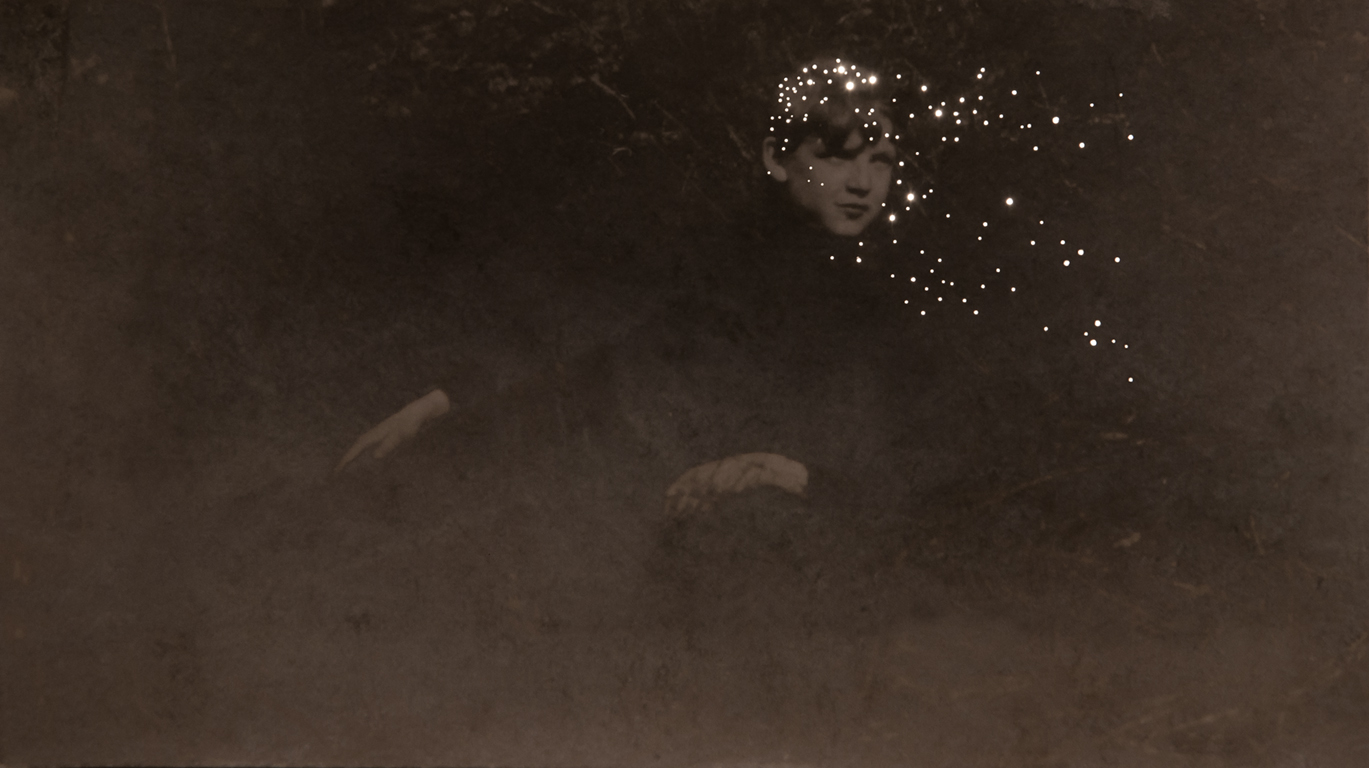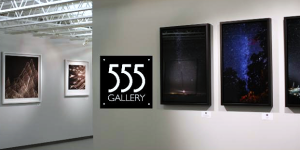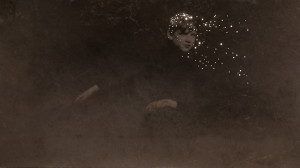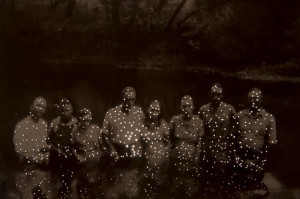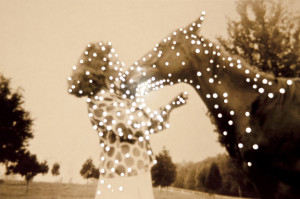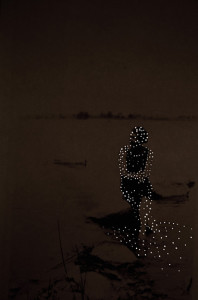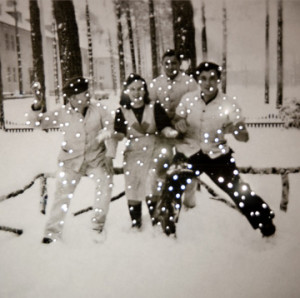Amy Friend in Under Astral Skies
While I’ve recurrently had the pleasure of crossing paths with the uncanny work of Amy Friend for a number of years, I have only just had the pleasure of speaking with the Canadian artist herself this past week. Amy is currently included in the exhibition “Under Astral Skies”which is on view at 555 Gallery in South Boston through February 14th. The Reception and Gallery Talk with the artists is on Saturday, February 7 5-8PM.
Liz Sales: Congratulations on being included in Under Astral Skies at 555 Gallery!
Amy Friend: Thanks!
LS: I’ve always wondered: Do the points of light in your work refer to actual constellations?
AF: I am not that literal. I’m playing with a more metaphoric type of astrophotography, alluding to something that’s gone. Many of the stars we see are long dead, like the people in the images I use.
LS: Sort of like how a photograph is composed of time and space but also removed from time and space?
AF: Yes. I’m wondering, what is the state of the stars whose light we are seeing now? What value does a discarded snapshot have a hundred years later? What meaning am I bringing to it?
Are We Stardust
LS: Could you talk a little bit about the meaning you are bring to these images?
AF: I’m adding light. Photographs are already made of light; I’m interested in seeing what happens when I add light to them over and over again. My titles are important to the meaning of the work as well. With my process and titles I am “playing” with the medium while using the imagery to represent possible interpretations. The titles hint at the history of the photograph and/or to the medium of photography
LS: Could you give me an example?
AF: “What is done in the darkness, will be brought to the light” uses a photo is from a river baptism. It specifically connects to the visual imagery but also to the processes involved in making an analog photograph.
And the light shines in darkness
LS: Were you raised religiously?
AF: I’m very much interested in the idea of the spiritual, but not so much in a concrete way. I’m not a practicing Catholic. But I remember my grandma running around the house with holy water: sprinkle, sprinkle. The darkroom is a sort of sacrament: Bring images out of the darkness and into the light. And my process is a way of giving images a second life. But sometimes anonymous people online respond negatively to my work, which I find interesting.
LS: How so?
AF: They say that using other people’s images is not a way of making art or they are offended that I am destroying someone else’s pictures. I feel that I’m honoring these photographs by giving them a second life.
LS: Exactly. I see your work as recycling material in the same way that you are recycling meaning?
AF: Yes, but each image also has its own story as well.
Afterglow
LS: Does it also feel, to some degree, like there is so much photographic material out there that it would be a waste to start from scratch?
AF: No, it’s more that existing images and other objects have a history and I’m interested in that history. For example, I’m starting a new project using some things that belonged to my great-uncle. My great-uncle was a bit of a hermit, but our family befriended him and got to know more about his life before he died. Many years earlier, his wife went in for routine surgery but died. She’d written him a letter before going in, which I have; of course, I’ve ended up being the keeper of the things from the dead.
LS: What does it say?
AF: Something like, “My Dearest Bill, Just in case things don’t go well, the papers are taped under the drawer in our bedroom. I love you very much.” It is very simple, but so sad. I’m trying to figure out how to make work with it and the other objects. I’d like to do something more than re-photograph them. I’m working towards an exhibition.
LS: Congratulations! When and where will that be?
AF: Rodman Hall in in St. Catherine’s, Ontario. It will open January of 2016 and is curated by Marcie Bronson.
Late summer evening Ontario
AF: …I think I might burn the letter.
LS: Oh, wow, that’s intense. And it also speaks to an issue central to your work: Do objects matter after there’s no one they’re significant to?
AF: Does anything matter when we are gone? Why? Why not?
LS: Is reading a significant part of your practice? I ask because sometimes your titles refer to texts and you are currently working with a letter.
AF: I love literature and yes, it is important, but at the moment, I’m focused on personal writing. I have letters written by my family, sent between Italy and Canada over a 40-year period, many during WW1. They’re all handwritten and so beautiful.
LS: Oh, interesting. Are you going to burn them too?
AF: No, but I think a lot of my work plays with the idea of what is seen. Do we need to be seen to have existed? Photography really messes with this thought. I’ve been asked, “if you could have only one photo taken of yourself, what would it be?” I love that question because it gets to the idea that in order to exist we need to be visualized.
LS: I’ll be looking forward to seeing how this all materializes. Thanks so much for chatting with me!
AF: Of course. It was nice to finally meet you.
